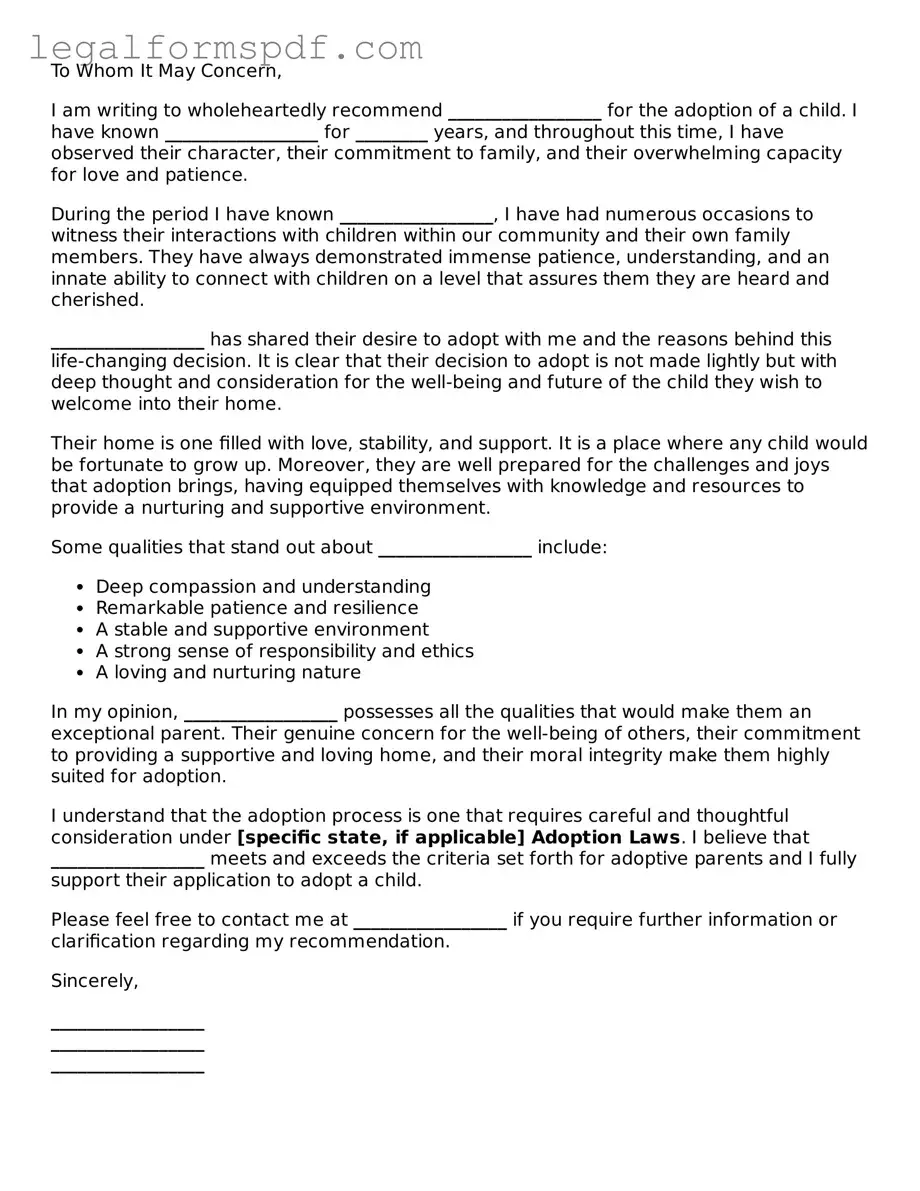What is the purpose of the Adoption Letter of Recommendation?
The Adoption Letter of Recommendation is a crucial document in the adoption process. It provides a third-party perspective on the applicant's suitability to become an adoptive parent. This letter helps the adoption agency or authority to understand the applicant's character, parenting capabilities, and overall readiness to adopt a child.
Who should write the Adoption Letter of Recommendation?
It is recommended that the letter be written by someone who knows the applicant well and can speak to their character and parenting abilities. This could be a close friend, family member, coworker, or professional acquaintance. The key is that the writer has had the opportunity to observe the applicant in situations that demonstrate their ability to nurture and care for others.
What should be included in the Adoption Letter of Recommendation?
The letter should include specific examples of the applicant's interactions with children and their approach to parenting or caregiving. It should describe the applicant's character traits that are relevant to parenting, such as patience, stability, maturity, and empathy. The letter should also assess the applicant's home environment and support system, highlighting why these factors make them a good candidate for adoption.
How long should the Adoption Letter of Recommendation be?
While there is no strict requirement, it's generally advisable for the letter to be one to two pages long. This length provides sufficient space to detail the applicant’s qualifications without being overly lengthy. It's important to be concise and to the point, focusing on relevant information.
Can a family member write the Adoption Letter of Recommendation?
Yes, a family member can write the letter if they can provide objective and meaningful insights into the applicant's suitability for adoption. However, it often carries more weight if the letter comes from a non-family member who can offer an unbiased perspective on the applicant’s abilities and character.
Is there a specific format that the Adoption Letter of Recommendation should follow?
While there's no universal format, the letter should be formally structured. It should start with an introduction explaining the writer’s relationship to the applicant, followed by the body containing specific examples of the applicant’s suitability for adoption, and conclude with a summary statement endorsing the applicant as an adoptive parent.
How can one submit the Adoption Letter of Recommendation?
The submission process varies by adoption agency or authority. Typically, the letter should be submitted as part of the adoption application packet. It could be required in a sealed envelope or as an electronic submission, depending on the agency's requirements. Always check with the specific agency to understand their submission guidelines.
What happens if the Adoption Letter of Recommendation is not favorable?
An unfavorable recommendation can impact the adoption application negatively. However, agencies consider the overall application and multiple factors in their decision-making process. Applicants have the opportunity to discuss any concerns raised in letters of recommendation during interviews or provide additional information to address any issues.
